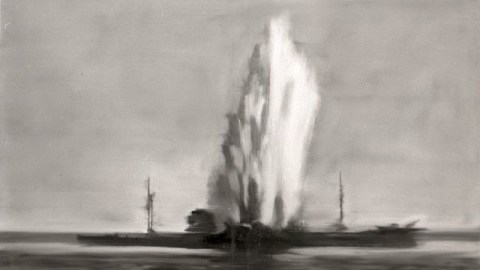Do Artists Have the Right to Destroy Their Own Work?

What drives an artist to destroy something they spent their time and energy on to create? Hatred? Self-disgust? Embarassment? Fear of how it might be interpreted or misinterpreted? German artist Gerhard Richter, set to celebrate his 80th birthday on February 9th and receive all the accolades and exhibitions such a landmark deserves, recently revealed to the German periodical Der Spiegel that he has been destroying some of his own work for over half a century for a variety of reasons, most of which entail a need for “liberation” from the constraints his public threatened to place on him as a “name” artist. With frank honesty, Richter admits his regrets over these acts of self-destruction which have cost him millions of dollars in potential sales (which he doesn’t seem to care much about) and have cost us all valuable landmarks in the progress of 20th century painting. Even though an artist brings his or her art into the world, do they have the right to take it back out of it?
Richter felt ambivalent enough about the destruction to photograph many works before immolating them or slashing them with a box cutter. Those photos (and Richter’s amazingly photographic memory) are all the clues we have of these works lost to history. “Sometimes, when I see one of the photos, I think to myself: That’s too bad; you could have let this one or that one survive,” he admits in the article, adding, however, that “[c]utting up the paintings was always an act of liberation.” Some works from Richter’s very first exhibition in 1964, including Warship Destroyed by Torpedo (photo shown above), disappeared from view thanks to Richter’s harsh self-criticism. Ulrike Knöfel, author of the piece in Der Spiegel, calls this and other destroyed paintings from that first show “great, vexing works” that “[i]f they still existed… would be hanging in private collections or major museums” thanks to Richter’s elite status as, in the eyes of Knöfel and many others, “the most important painter of our time.”
Perhaps the most tantalizing lost work is a portrait of Adolph Hitler painted by Richter in 1962. “Long before the student uprisings of the late 1960s,” Knöfel explains, “Richter had the courage to put an end to the widespread tendency to repress discussion of Germany’s recent wartime past.” Barely two decades removed from the self-immolation of Germany at the close of World War II, discussion of Hitler was the last thing on Germans’ minds and a taboo subject for German artists. Richter still defends his destruction of the Hitler portrait by claiming it was too “spectacular” to serve any valuable purpose. “Perhaps he should have given the work—and his audience—more time,” Knöfel counters. “It would have been a work of fundamental importance in the history of art.” That lost opportunity can’t be measured in dollars or euros.
In one sense, of course artists have the right to destroy their works. They made them, so they can destroy them. They’re just things made by human hands and just as easily destroyed by human hands. Destroying a painting or a statue is more complicated than shaking an Etch-a-Sketch, but the principle remains the same. In another sense, however, an artist has no right to destroy their works because, once they come into the world, those works are no longer “theirs,” the same way that our children are not ours to destroy once we give them life. Once a piece of art enters the flow of art history, does anyone have the right to pull it out? Is there any justifiable reason for doing so? I think of Robert Rauschenberg’s Erased de Kooning, in which Rauschenberg asked Willem de Kooning to give him a drawing with the understanding that it would be erased. In that case, Rauschenberg robbed the world of a de Kooning to make us appreciate all the other de Koonings that much more. It may be the one case of artistic justifiable homicide.
“Sometimes,” Richter says near the end of the piece, “time teaches you things.” Richter condemned a 2005 painting of the World Trade Center towers (titled simplySeptember) to the flames before changing his mind, but today it hangs in the MoMA. The German genius still admits to destroying works when they “bother him,” so maybe time hasn’t taught him everything just yet, but maybe his story of creation, destruction, and regret will teach others.
[Image:Gerhard Richter. Warship Destroyed by Torpedo, 1964.]





